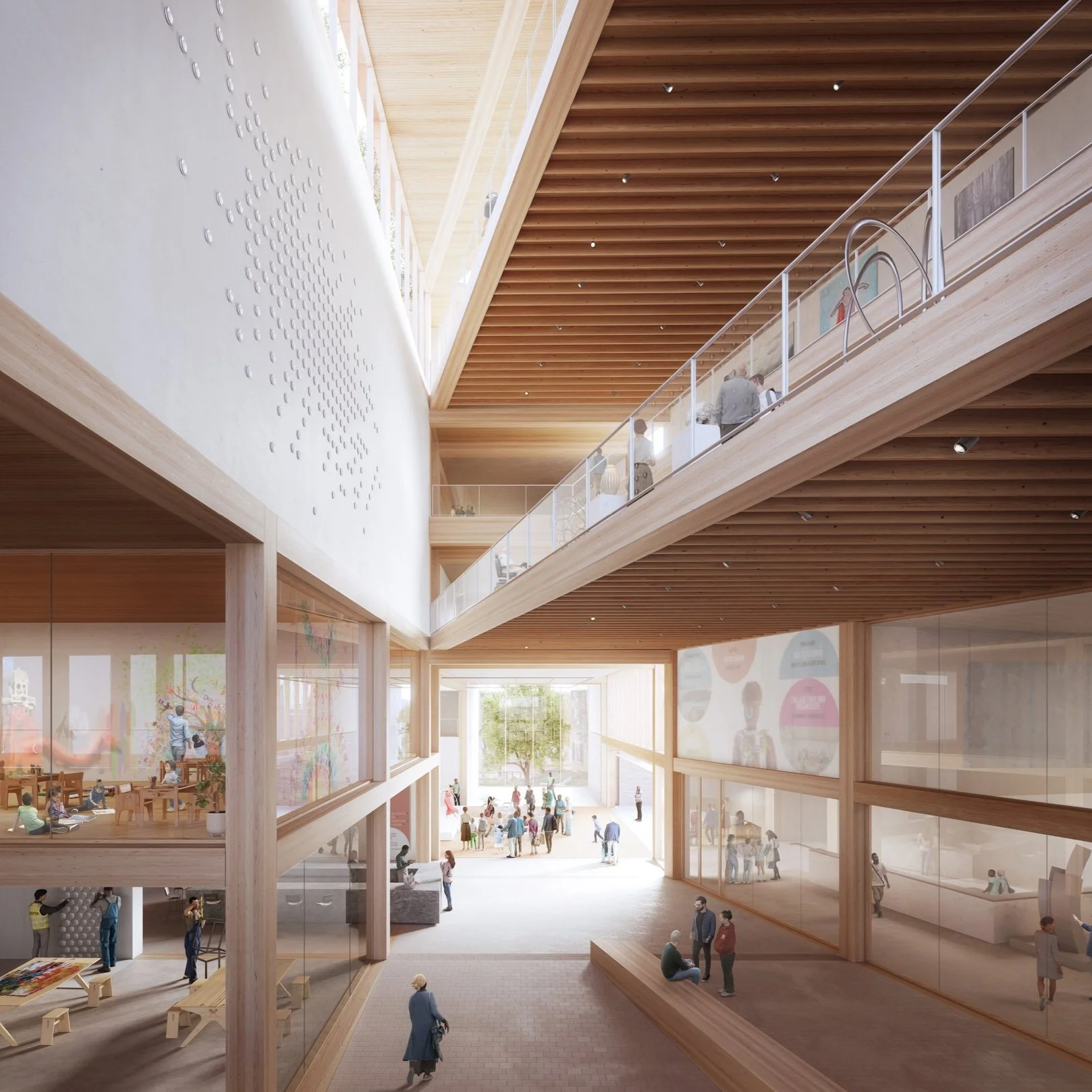Mainebiz: Portland Museum of Art sees community focus for new $85M expansion campaign
The Portland Museum of Art has launched an $85 million fundraising and expansion plan.
This article appears in Mainebiz.
By Jessica Hall
As the Portland Museum of Art aims to raise $85 million for a major expansion, the museum hopes a new focus on community, diversity and environmentally friendly buildings will broaden the fundraising pool and attract new visitors.
So far, the museum has raised $15 million of the goal, leaving $70 million more to come up with over the next three years.
“I don’t know how the philanthropic environment is right now,” Museum Director Mark Bessire told Mainebiz in an interview Monday. “We’ve learned so much from COVID and the racial justice movement. We have to think differently about the museum and think of it more of a community arts center. That could make a difference in the philanthropic interest we get.”
“We will have a sort of WeWork space, classrooms, public, open free space and it will be a ‘green’ building. That may expand our philanthropic environment and pool as well,” Bessire said.
The museum’s capital campaign will fund the expansion from a total size of 38,000 square feet to nearly 100,000 square feet. The plans call for six- or seven-story building, an all-ages makers space, an auditorium, house local nonprofits and space for traveling exhibitions.
As some people have predicted, the expansion would make use of the neighboring building and former Children’s Museum and Theatre of Maine, at 142 Free St., which the museum purchased in 2019 for $2.1 million.
The museum has changed its acquisition policies to become more diverse in its exhibits and gifts of various works have broadened its collection, as well, Bessire said.
“We have been focusing on diversifying in the last few years our artists of color, our women artists,” he said, citing a recent gift of photography from photographer and philanthropist Judy Glickman Lauder, a gift of Wabanaki baskets the Barbara Goodbody Collection, and the promise of the Richard Estes Collection and Archive.
The museum hopes its transformation will help make a positive impact on the immediate neighborhood and nearby Congress Square Park and Portland as a whole.
“It’s an area where people come to go to the museum or come to go to the State Theater but don’t come to stay and hang out. We hope to help change that. This is the last great square in Portland that needs some love,” Bessire said.
The museum had about 175,000 visitors before the pandemic, “so we’re a magnet for audiences. If we can broaden our audience, that can only help the surrounding neighborhood and city,” Bessire said.
The PMA will put out a request for proposals for architecture firms and will hold a competition. The five finalists will come to Portland to present their ideas.
“We want the process to create the building. We want to work with the community and the architects to come up with a vision of what we could be. We have a programmatic map of what we want to include, but we don’t know what it will look like,” Bessire said.
He expects the public to provide feedback on the various proposals.
“We’re trying to move away from the traditional idea of a museum. We want the present ideas, feelings and values to manifest themselves,” Bessire said.
He pointed to some other museums that have embraced similar philosophies such as the Albright-Knox Art Gallery in Buffalo, N.Y., the Columbus Museum of Art in Columbus, Ohio, as well as the San Francisco Museum of Modern Art, which houses a library branch.
“This is a very different focus. Putting all of the community space in the museum. There’s some very innovative work being done in libraries across the country and in museums in Europe,” Bessire said. “We have three gorgeous buildings for showing art. They are fairly formal. They are not the best for community dialogue and performance.”
“Our physical plant must mirror our philosophy. We have ideas of what goes into the building, but not what the building will be. There’s no predestined view. Our ideas and philosophy are there and we want to find out what these architects can imagine,” Bessire said.
Renovating or rebuilding the former Children’s Museum space is phase one of a three-phased project. Phase two will involve transitioning the older buildings and shifting offices into the new building to free up gallery space. Phase three will involve the land the museum owns on Spring Street, which Bessire said could involve parking.
Bessire said he did not know how long the three phases would take to complete.
“We have been thinking about this project for some time. We have all the pieces in place, the board, the property, the space. Now is the time to really transform,” Bessire said.











